(Kadamba Kanana Swami, July 2011, Fruska Goranga, Serbia, Srimad Bhagavatam 1.2.16)
Question: How to deal with the notorious false ego?
You can buy a self-help sociology book. It is useful because it makes you more aware but your false ego will still be there. Carl Jung speaks of a swollen ego. We can try so many techniques and all may help a little bit.
 But I think that the approach of Sri Caitanya Mahaprabhu is nice. It is an approach where we just don’t pay attention to this false ego. It works through our mind, and constantly the mind comes up with endless rubbish.
But I think that the approach of Sri Caitanya Mahaprabhu is nice. It is an approach where we just don’t pay attention to this false ego. It works through our mind, and constantly the mind comes up with endless rubbish.
The mind is like a spoiled child. If we want this child to stop crying, just ignore it. Cry until you are dry. Simple as that!
Not that we do it in the mood of just renouncing and being hard. We just get busy in devotional service. Too busy and then we can’t complain.
“Oh, I’m so busy. I have no time for anything else. I can hardly chant my rounds! Oh, I have never time to read! I have so much service.”
Good! Because if we would have time, we would just think of nonsense anyway and if we would have time, we would still not chant seriously. We would still chant, “Hare Krsna Hare Krsna… Oh, how are you today?”
So, if you have such a big, swollen false ego then the best remedy is to just become overloaded with service and that service will save us. Then later, after we have made sacrifice in service, then we will find that our hearing, chanting, remembering has grown deeper.

 Little devotees play Lord Nityananda in this lovely play from Chaitanya Bhagavat. This was their very first public performance. Read more ›
Little devotees play Lord Nityananda in this lovely play from Chaitanya Bhagavat. This was their very first public performance. Read more ›  Little devotees play Lord Nityananda in this lovely play from Chaitanya Bhagavat. This was their very first public performance. Read more ›
Little devotees play Lord Nityananda in this lovely play from Chaitanya Bhagavat. This was their very first public performance. Read more ›  In order to please our most beloved Lordships Sri Sri Gandharvika Giridhari and His Divine Grace A.C. Bhaktivedanta Swami Srila Prabhupada, the ISKCON Temple in Bangalore organizes a grand “Festival of Kirtanas” every month providing an opportunity to all the souls in hearing and chanting the holy names of Lord.
The “Festival of Kirtanas” is conducted on the fourth Sunday of the every month. Please do come, join us and participate in this wonderful festival.
In order to please our most beloved Lordships Sri Sri Gandharvika Giridhari and His Divine Grace A.C. Bhaktivedanta Swami Srila Prabhupada, the ISKCON Temple in Bangalore organizes a grand “Festival of Kirtanas” every month providing an opportunity to all the souls in hearing and chanting the holy names of Lord.
The “Festival of Kirtanas” is conducted on the fourth Sunday of the every month. Please do come, join us and participate in this wonderful festival. 


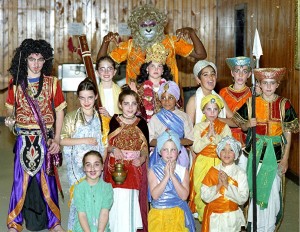








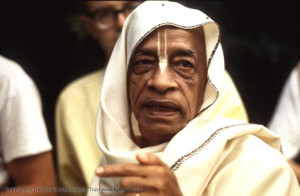
 Young entrepreneurs :-)
Young entrepreneurs :-)  The Jagannath Temple in Puri is a famous temple dedicated to Lord Jagannath and located on the eastern coast of India, at Puri in the state of Orissa. The name Jagannath comes from the word Jagat-Nath which means 'Lord of the Universe'
The Jagannath Temple in Puri is a famous temple dedicated to Lord Jagannath and located on the eastern coast of India, at Puri in the state of Orissa. The name Jagannath comes from the word Jagat-Nath which means 'Lord of the Universe' 






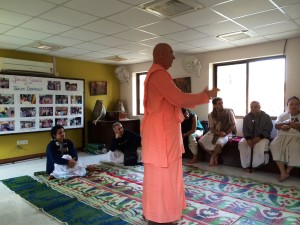
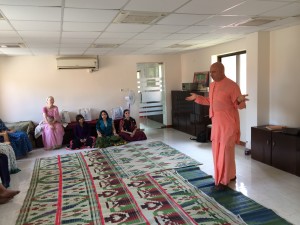
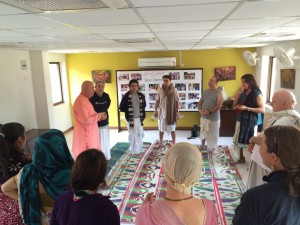
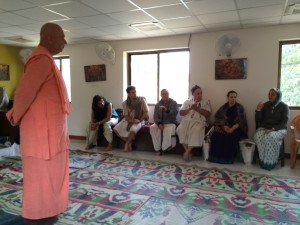
 For the 1st part of 129 photos: http://m.dandavats.com/?p=1391
For the 1st part of 129 photos: http://m.dandavats.com/?p=1391  Braja Bihari prabhu gives a fantastic talk about habits at ILS (ISKCON Leadership Sanga - 2014). Braja Bihari dasa is the director of ISKCON Resolve. He is a mediator and ombudsman. He's presently pursuing an MA in Conflict Transformation. He lives in Vrindavan, India.
Braja Bihari prabhu gives a fantastic talk about habits at ILS (ISKCON Leadership Sanga - 2014). Braja Bihari dasa is the director of ISKCON Resolve. He is a mediator and ombudsman. He's presently pursuing an MA in Conflict Transformation. He lives in Vrindavan, India.  ISKCON Cinema will produce the Documentary Feature Film, ACHARYA—One Who Teaches by Example. This is a 90 minute, broadcast quality, HDTV production depicting the life and teachings of Srila Prabhupada. The film will depict the incredible story of one devoted soul's mission to re-spiritualize humanity. The movement he started in 1965 continues to thrive worldwide 36 years after his disappearance. In a short period of 12 years, what Srila Prabhupada accomplished was superhuman. This film should prove to be a real eye opener for moviegoers and audiences around the world.
ISKCON Cinema will produce the Documentary Feature Film, ACHARYA—One Who Teaches by Example. This is a 90 minute, broadcast quality, HDTV production depicting the life and teachings of Srila Prabhupada. The film will depict the incredible story of one devoted soul's mission to re-spiritualize humanity. The movement he started in 1965 continues to thrive worldwide 36 years after his disappearance. In a short period of 12 years, what Srila Prabhupada accomplished was superhuman. This film should prove to be a real eye opener for moviegoers and audiences around the world.  Pancharatna prabhu speaks about most important steps for effective outreach and cultivation of Krishna consciousness at ILS (ISKCON Leadership Sanga - 2014).
Pancharatna prabhu speaks about most important steps for effective outreach and cultivation of Krishna consciousness at ILS (ISKCON Leadership Sanga - 2014). 